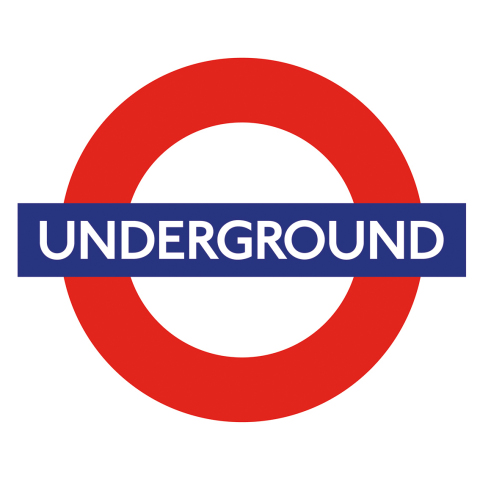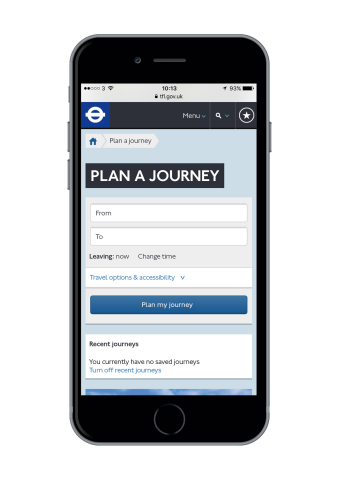WOBURN, Mass.--(BUSINESS WIRE)--Marking the centennial of Johnston, the London transport network’s iconic typeface, Monotype and Transport for London (TfL) today unveiled the forthcoming release of the newly designed Johnston100 typeface. Remastered by Monotype to bring back the original flavour of the Johnston design developed 100 years ago, Johnston100 expands the palette of the original typeface to embrace both contemporary typographic trends and new digital requirements. Johnston100 includes five weights of the design, including two brand new contemporary weights: hairline and thin, and will start to appearing across the TfL network later this year. Johnston was originally designed by Edward Johnston in 1916 and is instantly recognisable as the graphic language of London. Used across all trains and buses, station signage and wayfinding, Johnston is ingrained in the fabric of the city.
Johnston100: Why now?
2016 marks the 100th year anniversary
of the Johnston typeface. As TfL’s presence has expanded beyond physical
locations/uses like train stations and uniforms to digital mediums like
apps, signage and social media, the need for a modern spin on the
classic typeface became apparent. Monotype expanded the design to allow
for better usability across various branding platforms, and has added
new weights in order to expand the voice of the typeface. This allows
for a more nuanced palette and wider versatility in the design.
“The Johnston typeface speaks of London like no other. It has been around 100 years. It will be around 100 more years if not longer. We just want to make sure it’s used consistently across all our branding touchpoints and across all future branding platforms we may have, so we asked Monotype to go back to the original principles of Johnston, and create a digital typeface using the DNA of its truly iconic predecessor” said Jon Hunter, Head of Design at TfL. “With social media becoming more prevalent, essential even, certain characters – such as the “hashtag” and the “at” symbol have become ingrained into the very fabric of modern life. I like to think that if Johnston was posed the challenge today of creating a digital version of the font, he would have arrived at a very similar conclusion.”
The announcement of Johnston100 supports TfL’s celebrations to mark the centenary of the iconic Johnston typeface and forms part of TfL’s Transported by Design programme, which showcases the impact of good design on the London transport network.
Johnston100: Two New Contemporary Weights
The new
Johnston100 family features five weights of the design, including two
brand new weights: hairline and thin. These two new weights demonstrate
the challenge of trying to strip a typeface of its mass and find its
skeleton – both a design and research task. The result, especially the
hairline, is enchanting as it harks back to Johnston’s original design
but is simultaneously very contemporary in flavour.
Monotype Type Director Nadine Chahine and Senior Type Designer Malou Verlomme completed extensive research, exploring archive material and original drawings by Edward Johnston to return to the soul of the typeface. The pair worked to pinpoint key elements, which had been lost over years of the typeface’s evolution, and were necessary to reintroduce for Johnston100.
“The philosophy of the Johnston design is consistent and versatile enough that it could sustain all of the different fashions and use cases that have come in the last 100 years,” said Chahine. “However, the latest versions had become a bit utilitarian and uniform and we wanted to bring back some of the original soul and tap into its idiosyncrasies – accepting all of the unique little details. With Johnston100, we added some thin weights to capture the contemporary trend of having something light and elegant. In doing that we were able to create something very fashionable and modern and yet still true to the original intent of the design. We’re excited to see it rolled out throughout London in coming months.”
Johnston100 has been widened to provide a more relaxed feeling, calling back to Edward Johnston’s original drawings. Through its evolution, the Johnston typeface became narrower and more mechanical as functionality took precedence over historical design. The new Johnston100 typeface has a feeling of injected geometry, which includes proportional figures, rather than tabular, and its character set has been expanded to include more accented characters and diacritics allowing for use among a wider variety of languages.
Johnston100 in Use
Johnston100 will be rolled out by TfL
from July 2016, initially for printed materials, such as Tube maps and
posters. Over time, the typeface will be used within TfL’s trains and
station signage including for London’s new Crossrail Elizabeth line –
scheduled to open in 2018.
Johnston100 can also be seen for the first time on a special edition poster designed by Monotype to celebrate the Johnston centennial. The Monotype poster joins a series of 10 developed in partnership with TfL, with further poster designs from Pentagram, SEA and Alan Kitching. The series will be live across the Underground network from June 10, 2016 for two weeks and limited edition prints can be purchased directly from the London Transport Museum Shop.
For more information on Johnston100 visit www.monotype.com/johnston100 or watch this video: https://vimeo.com/169691159
About Monotype
Monotype is a leading global provider of typefaces, technology and expertise that enable the best user experience and ensure brand integrity. Headquartered in Woburn, Mass., Monotype provides customers worldwide with typeface solutions for a broad range of creative applications and consumer devices. The company’s libraries and e-commerce sites are home to many of the most widely used typefaces – including the Helvetica®, Frutiger® and Univers® families – as well as the next generation of type designs. Further information is available at www.monotype.com. Follow Monotype on Twitter, Instagram and LinkedIn.





